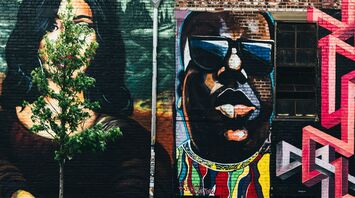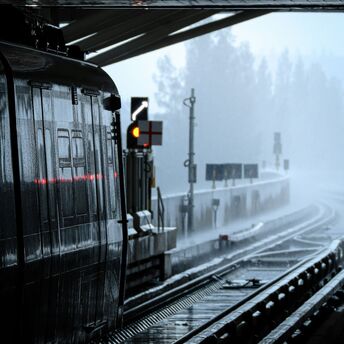Bushwick’s Street Art Scene: A Canvas of Creativity Amidst Gentrification

Bushwick, a neighborhood in Brooklyn, New York, has become a dynamic center of street art, where vibrant murals and graffiti cover the walls, telling stories of the community’s past, present, and future. Once a predominantly industrial area, Bushwick has undergone significant changes in recent years, as gentrification has transformed it into a hub for artists, creatives, and young professionals. However, this transformation is a double-edged sword, raising questions about the impact of gentrification on the very culture that made Bushwick unique.
The Evolution of Bushwick’s Artistic Landscape
Bushwick’s journey from an industrial district to a canvas for street art began in the late 20th century, when the area was characterized by abandoned warehouses and low rents. These conditions attracted artists who were seeking affordable studio space and a community where they could freely express their creativity. Over time, the neighborhood’s walls became a gallery of sorts, with artists using the urban landscape as their canvas.
The street art in Bushwick is not just decoration; it’s a reflection of the neighborhood’s identity. Murals depict a wide range of themes, from social justice issues to personal expressions of identity and culture. Walking through the streets of Bushwick feels like exploring an open-air museum, where each piece of art offers a glimpse into the thoughts and emotions of the artists who created them.
The Gentrification Dilemma
As Bushwick gained popularity for its artistic vibe, it also became a target for gentrification. Rising rents and an influx of new residents have dramatically altered the demographic and economic landscape of the neighborhood. While gentrification has brought increased investment and development, it has also led to the displacement of long-time residents and the loss of some of the area’s original character.
For many of the artists who helped shape Bushwick’s cultural identity, gentrification poses a significant challenge. On one hand, the neighborhood’s transformation has brought more visibility and opportunities for local artists. On the other hand, the rising cost of living threatens to push these very artists out of the community they helped create.
The tension between preserving Bushwick’s authentic, grassroots culture and embracing the changes brought by gentrification is palpable. As new developments spring up and trendy businesses move in, there is an ongoing debate about who benefits from these changes and what is lost in the process.
Navigating Bushwick’s Street Art Scene
For travelers and art enthusiasts, Bushwick offers a unique opportunity to explore a neighborhood where creativity is woven into the very fabric of the community. Guided tours are available, providing insights into the stories behind the murals and the artists who created them. These tours often highlight the contrast between Bushwick’s gritty past and its evolving present, offering a deeper understanding of the forces shaping the neighborhood.
However, visitors should approach Bushwick’s street art with an awareness of the complexities surrounding gentrification. While the art is undoubtedly a draw, it’s important to recognize the broader context in which it exists. The murals and graffiti are not just tourist attractions; they are part of an ongoing conversation about community, identity, and change.
The Future of Bushwick’s Art and Community
As Bushwick continues to evolve, the future of its street art scene remains uncertain. The neighborhood’s transformation is far from complete, and the balance between maintaining its artistic integrity and accommodating new development is delicate. Some artists and community members are actively working to ensure that Bushwick’s creative spirit is preserved, even as the neighborhood changes around them.
One possible future for Bushwick lies in finding ways to support both the artists and the long-time residents who have been the backbone of the community. Initiatives that provide affordable housing and studio space, as well as programs that promote cultural preservation, could help to maintain the diversity and creativity that define Bushwick.



















